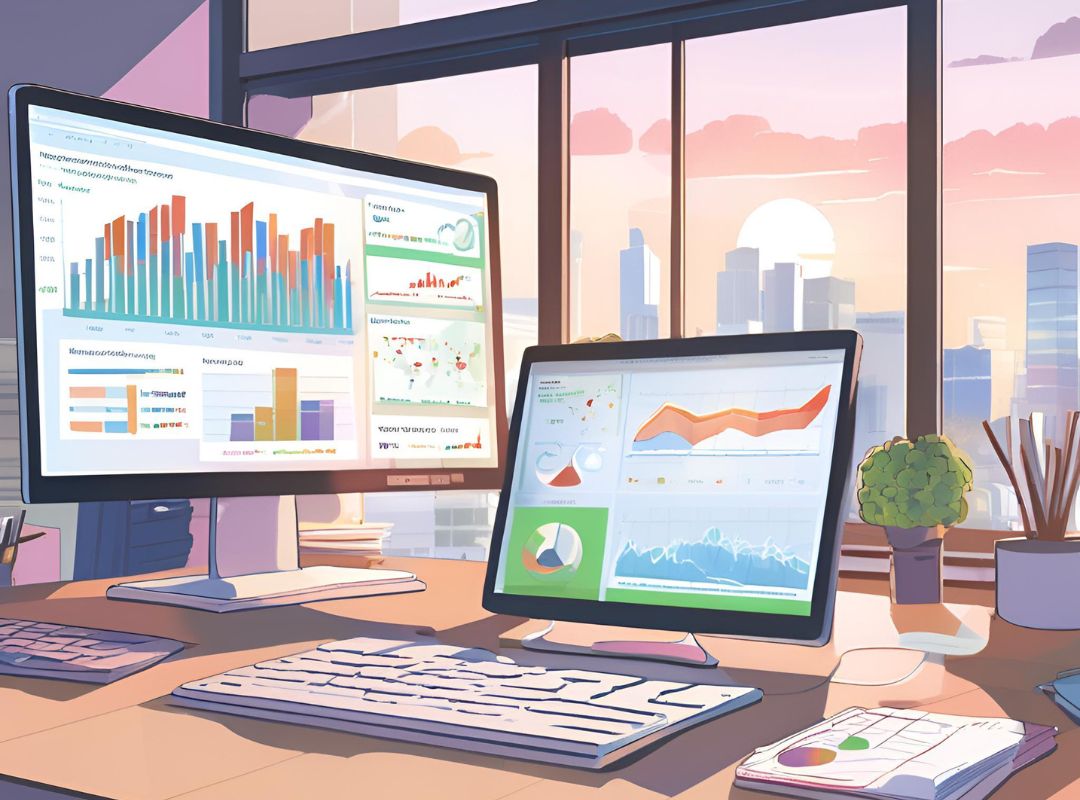The power of graphic design in modern marketing
The quality of your graphic design can make or break your business’s identity, and how effectively your engage your target audience.
In marketing, grabbing and retaining the audience’s attention is paramount. Amidst a sea of information, graphic design emerges as a powerful tool to create a lasting impression. From digital screens to printed brochures, high-quality design is a crucial component that drives engagement and communicates a brand’s message effectively.
The role of graphic design in audience engagement
Good graphic design is more than just aesthetic appeal; it’s a strategic asset that enhances communication. Here’s why it’s essential:
- First impressions matter: In a world where attention spans are fleeting, a well-designed visual can instantly captivate and intrigue. The initial impact of a compelling design can determine whether the audience stays to explore more or moves on.
- Brand identity and recognition: Consistent and thoughtful design helps establish a brand’s identity. Logos, colour schemes, typography, and imagery collectively create a visual language that audiences can recognise and connect with. This consistency builds trust and loyalty over time.
- Improved readability and understanding: Complex information can be made accessible through effective design. Infographics, charts, and well-structured layouts guide the viewer’s eye and help convey messages clearly and concisely.
- Emotional connection: Design has the power to evoke emotions. Through the use of colours, shapes, and images, brands can evoke feelings that resonate with their audience, whether it’s the excitement of a new product launch or the comfort of a trusted service.
Graphic design across digital and print platforms
The versatility of graphic design makes it applicable across various platforms, each with its unique benefits.
Digital platforms
- Websites and social media: The digital landscape is dominated by visuals. High-quality design on websites and social media platforms not only attracts visitors but also encourages interaction. Engaging graphics, animated elements, and interactive design can transform a passive browsing experience into an engaging journey.
- Email marketing: Well-designed emails can significantly increase open and click-through rates. Visual elements, when combined with compelling copy, create a persuasive narrative that guides the recipient towards the desired action.
- Online advertisements: In the competitive space of online advertising, eye-catching designs are essential. Whether it’s a banner ad or a sponsored post, the right visuals can enhance visibility and drive conversions.
Print platforms
Despite the dominance of digital media, print remains a vital component of a comprehensive marketing strategy.
- Brochures, posters and flyers: Tangible products like brochures, posters and flyers provide a physical connection to the brand. They are particularly effective in settings like trade shows, events, and direct mail campaigns where a digital touchpoint may not be feasible.
- Packaging: Product packaging is a form of print design that directly influences purchasing decisions. Attractive and informative packaging can differentiate a product on crowded shelves and convey brand values at a glance.
- Business cards: In professional networking, a well-designed business card is indispensable. It serves as a lasting reminder of a personal interaction, bridging the gap between physical and digital engagement.
The ongoing relevance of print in a digital age
In an era where digital marketing dominates, the question arises: Why do tangible products like brochures remain valuable?
- Tangible engagement: Physical materials provide a tactile experience that digital media cannot replicate. The act of holding a brochure or flipping through a catalogue engages multiple senses, making the interaction more memorable.
Furthermore, having a physical brochure sat on one’s desk is far harder to ignore than an transient social media post. It’s a regular reinforcement of your business. - Less digital clutter: As inboxes overflow with emails and social media feeds become saturated, print materials stand out. A well-designed brochure received in the mail can capture attention precisely because it’s not part of the digital noise.
- Targeted reach: Print materials can be strategically distributed to specific locations and demographics. This targeted approach ensures that the marketing message reaches the intended audience without relying solely on digital algorithms.
Conclusion
Graphic design is an indispensable element of effective marketing, bridging the gap between a brand and its audience. Whether through digital platforms or print media, good design enhances communication, fosters engagement, and builds brand identity.
Despite the constant evolution of marketing, the power of design remains a constant, driving the success of promotional efforts across all channels. Embracing the principles of high-quality graphic design ensures that your message not only reaches but resonates with your audience.





